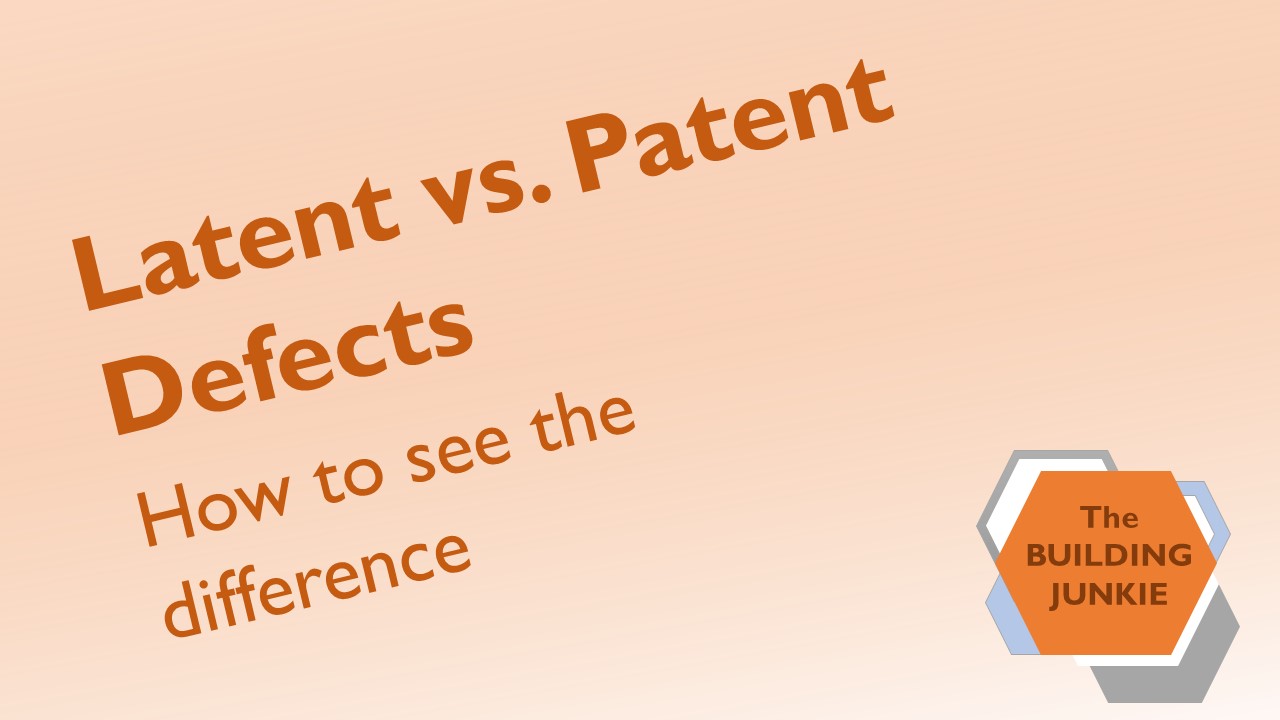How to See the Difference Between Latent & Patent Defects in Construction


Every construction project will have its challenges. No matter how well you plan a project you are bound to encounter problems. In this post we’ll discuss Patent and Latent defects, what causes them, how to differentiate them and how to recover from them. In this post we’ll show you how to see the difference between latent & patent defects in construction.
Construction Defects
First let’s talk about defects. A defect is a probem that prevents an intended use. Really that just means it’s a problem or conflict in the design or construction. Defects can be large or small. They can have huge cost impacts or none at all. The range of possible problems is essentially limitless but generally fall into two categories: Latent and Patent. That’s what the lawyers call it anyway. Let’s come up with more user-friendly names: Obvious and Hidden.
Patent (Obvious) Defects
Some problems are obvious. Carpet in the restroom. A door installed backwards. An electrical outlet left out. The possibilities are really endless. And if you’re in the business long enough, you’ll see all manner of defects, as if they are competing for the title of “Most Absurd Defect”. You will see parking stripes painted over grass and dirt. A retaining wall will be 2 feet too short. Or too tall. You will see windows painted over. I’ve witnessed some of these in person! While all of these hypothetical (and not so hypothetical) issues are ridiculous, the point is that patent defects are easy to see for an average reasonable person.
Latent (Hidden) Defects
Hidden defects are more difficult. Imagine walking into your brand new office for the first time after a long construction project. When you flip on the lights there is nothing. Just darkenss. The lights worked last week. What could be the issue now? A few days later the electrician tells you the switch has a smal manfucaturing defect. The defect caused a failure at the switch. This is a latent defect. No amount of reasonable inspection could have possibly uncovered this issue.
Other Effects
Sometimes evidence of a defect might not make it patent. What if that faulty switch above caused a fire. You will clearly see smoke stains and charred areas where the fire had been, but that evidence (which is Patent/Obvious) would not necessarily reveal to anyone the Latent/Hidden cause of the defect.
What to do about Construction Defects
Happily, most construction defects you’re likely to see will be revealed and corrected during the course of construction. In fact the use of the terms Latent and Patent are really more important in the courtroom rather than in the field. A good Contractor/Architect/Owner relationship will value honesty and accountability. When you select the right team, these problems are fixed by the team in an organic way.
Construction contracts should have levers and mechanisms to pull when the inevitable defect arises. Most Contractors will have a warranty period, usually 12 months after construction, to cover lots of types of defects. In the case of disagreement about financial responsibilities, always be sure contracts are clear about the differences between these issues and how to resolve them without going to court. There can be a fair amount of discussion about whether a defect is latent or patent , especially if a lot of money is on the line, which makes a good contract important as a result.
Conclusion
How to see the difference between latent & patent defects in construction is important so construction managers can know who to hold responsible for repairs. Defects are virtually impossible to avoid, but you can minimize them with competent design and construction partners and with close and careful observation during a project.
Disclaimer: I am not a lawyer and the above should not be construed as legal advice or guidance and is the opinion of the author’s alone.
What makes great Tenant Improvement design? - Building Junkie
[…] need a larger space. Or perhaps you find an endangered dung beetle on the site you’ve chosen. Maybe somebody screwed up. There are always […]